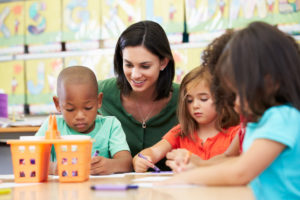 Summer may have only just started, but In 2013, approximately 42% of three-year-olds and 68% of four-year-olds were enrolled in preprimary programs throughout the United States. Although the majority of parents plan to enroll their children in preschool, knowing exactly when to do so can be a bit of a challenge. How do you know if your child is truly ready for the preschool classroom? While every child develops differently — and every school has different requirements — the following preschool checklist can give you a pretty good idea about whether your family should start exploring local preschool program options this year.
Summer may have only just started, but In 2013, approximately 42% of three-year-olds and 68% of four-year-olds were enrolled in preprimary programs throughout the United States. Although the majority of parents plan to enroll their children in preschool, knowing exactly when to do so can be a bit of a challenge. How do you know if your child is truly ready for the preschool classroom? While every child develops differently — and every school has different requirements — the following preschool checklist can give you a pretty good idea about whether your family should start exploring local preschool program options this year.
Your Preschool Checklist: Is Your Child Ready?
- Reading and Writing
During this early phase of life, your child won’t be expected to come into the classroom with a certain reading level. It may help if they can display certain signs of readiness in this area, including trying to write their name, doodling or scribbling, attempting to write down numbers, holding writing utensils, recognizing certain letters, holding a book properly and/or turning the pages, and simply enjoying having a book read to them. These signs indicate an eagerness and an affinity to make progress in the classroom. - Motor Skills
In terms of physical development, parents should be on the lookout for certain signs of preschool readiness. Although you might not think that bouncing a ball or playing a game of catch could indicate that your child is a good candidate for preschool, mastering tasks like these can actually tell parents a lot. The ability to put together an easy puzzle, playing with building blocks or LEGOs, jumping on one foot, riding a tricycle, tying shoelaces, cutting with scissors, or enjoying outdoor playtime can all point towards a child being ready to go into the preschool classroom. - Creativity and Reasoning
our child’s growing ability to use their imagination and explore their own curiosity about the world may play an important role in your preschool checklist. If they’re eager to use a variety of materials and tools to create pieces of art, show a basic understanding of shapes and objects, likes to imitate their favorite songs or rhythms, participates in dramatic play or likes to play pretend, can recall short sequences, matches objects, or shows an interest in how objects fit together and function, these are all great signs of early development. Remember that there’s a lot that can be discovered through play, so be sure to engage their interest in these areas on a regular basis. - Social and Emotional Development
Even at this young age, your child might start to show initial signs of independence and social development. For example, their initiation and maintenance of independent play and their willingness to spend time without their parents (at a relative’s house, a play date, or even while getting dressed in the morning) can tell you that they’ll be a great fit for preschool. Responding well to routines, expressing their emotions and needs through their words, taking turns and cooperating with others, enjoying group activities, and following instructions consistently can also indicate this to you. - Other Milestones
Most of the suggestions included in this preschool checklist are merely a good place to start. If your child possesses some of these skills but not others, do not be discouraged; your choice of preschool won’t discriminate against children who are still learning! But keep in mind that there are some milestones that may be requirements for preschool: namely, being potty-trained. Some preschools are willing to be flexible on this, while others request that all students will have at least made substantial progress in this area. Be sure to ask about this at every school on your list and work on this skill at home during this process.
Every parent’s preschool checklist for student readiness may look a little different, depending on that child’s development and your school. These points can be a helpful jumping-off point for families who are unsure about whether to start the application process or wait another year.



 Summer may have only just started, but many families are already looking forward to fall. If it’s almost time for your child to start attending preschool, you may be overwhelmed with the process of deciding on a school and enrolling. Knowing what to look for in a preschool can be tough enough, but submitting enrollment forms and waiting to hear if there’s a spot open can be downright nerve-wracking. The following list of tips and tricks will help take some of the mystery out of this process and help you feel totally prepared when enrolling in local preschool programs.
Summer may have only just started, but many families are already looking forward to fall. If it’s almost time for your child to start attending preschool, you may be overwhelmed with the process of deciding on a school and enrolling. Knowing what to look for in a preschool can be tough enough, but submitting enrollment forms and waiting to hear if there’s a spot open can be downright nerve-wracking. The following list of tips and tricks will help take some of the mystery out of this process and help you feel totally prepared when enrolling in local preschool programs.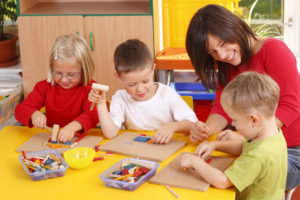 Childcare centers, academic preschool programs, and parents alike have a common issue: what curriculum is right for my children? Sometimes it behooves preschool teachers to consider a curriculum specifically for their students because these early years are developmentally crucial. Let’s face it — they’re not college students. They lack the independence to choose a curricular path that best suits their learning styles. This leaves preschool curriculum in the hands of parents, teachers, and administrators.
Childcare centers, academic preschool programs, and parents alike have a common issue: what curriculum is right for my children? Sometimes it behooves preschool teachers to consider a curriculum specifically for their students because these early years are developmentally crucial. Let’s face it — they’re not college students. They lack the independence to choose a curricular path that best suits their learning styles. This leaves preschool curriculum in the hands of parents, teachers, and administrators. Summer is right around the corner, which means your young children will soon be on vacation for a few months. Camp is a time-honored American tradition — and it’s one your kids may really love. However, choosing a summer camp that will fit their interests and needs (along with your budget and criteria) can be a challenge. That’s why it’s important to start early and to know what to focus on during your search. The following tips should be a great place to begin.
Summer is right around the corner, which means your young children will soon be on vacation for a few months. Camp is a time-honored American tradition — and it’s one your kids may really love. However, choosing a summer camp that will fit their interests and needs (along with your budget and criteria) can be a challenge. That’s why it’s important to start early and to know what to focus on during your search. The following tips should be a great place to begin.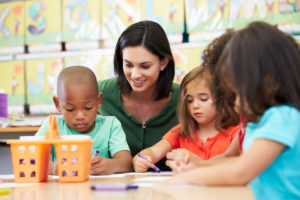 By 2013, the percentage of three- to five-year-olds enrolled in preprimary programs reached 65% in the United States. Finding a local preschool program that fits parents’ criteria is the biggest challenge. Before families tackle that problem, they may need to ask themselves: “Is my child ready for preschool in the first place?” Ultimately, the answer to that question can be answered only by the parents themselves. There’s no one right or wrong here; it really depends on the individual child, as each student will develop at a slightly different pace. Although every child is different, there are a lot of common situations that affect families and that prompt this question. We’ll explore a few of these today and provide some guidance that should help you make this determination.
By 2013, the percentage of three- to five-year-olds enrolled in preprimary programs reached 65% in the United States. Finding a local preschool program that fits parents’ criteria is the biggest challenge. Before families tackle that problem, they may need to ask themselves: “Is my child ready for preschool in the first place?” Ultimately, the answer to that question can be answered only by the parents themselves. There’s no one right or wrong here; it really depends on the individual child, as each student will develop at a slightly different pace. Although every child is different, there are a lot of common situations that affect families and that prompt this question. We’ll explore a few of these today and provide some guidance that should help you make this determination.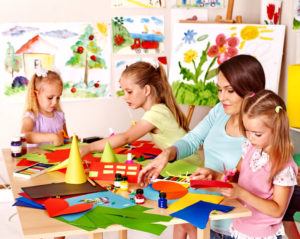 If you’re a working parent, you’ll likely need outside help to make sure your young child is consistently cared for. While some parents rely on other family members or a live-in nanny to provide this assistance, that’s not always possible — nor is it always in the best interests of everyone involved. Many parents determine that enrolling their child in daycare or in a daycare alternative like preschool will be of great benefit to everyone in the family.
If you’re a working parent, you’ll likely need outside help to make sure your young child is consistently cared for. While some parents rely on other family members or a live-in nanny to provide this assistance, that’s not always possible — nor is it always in the best interests of everyone involved. Many parents determine that enrolling their child in daycare or in a daycare alternative like preschool will be of great benefit to everyone in the family.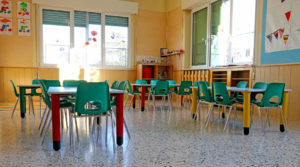 Deciding on the right childcare option can feel like an overwhelming task for families with young children. It’s important to remember, though, that there’s no “one size fits all” solution here. Rather than thinking there’s a single winner in the preschool vs daycare debate, parents need to realize that the right choice comes down to the needs of the individual child and the family. Many facilities will even offer both options to facilitate an easier transition and increase their appeal.
Deciding on the right childcare option can feel like an overwhelming task for families with young children. It’s important to remember, though, that there’s no “one size fits all” solution here. Rather than thinking there’s a single winner in the preschool vs daycare debate, parents need to realize that the right choice comes down to the needs of the individual child and the family. Many facilities will even offer both options to facilitate an easier transition and increase their appeal.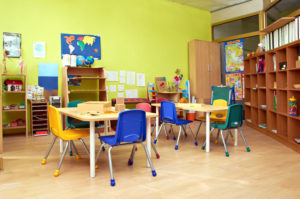 Local preschool programs play a huge role in the lives of countless families. For young students, the chance to learn in a preschool classroom can have an overwhelmingly positive impact on their development. Between 1993 and 2012, the percentage of three- to six-year-olds able to recognize all the letters in the alphabet increased from 21% to 38%, and the percentage of those able to count to 20 or higher rose from 52% to 68%. This difference can be at least partially attributed to the growing popularity of preschool programs in the United States.
Local preschool programs play a huge role in the lives of countless families. For young students, the chance to learn in a preschool classroom can have an overwhelmingly positive impact on their development. Between 1993 and 2012, the percentage of three- to six-year-olds able to recognize all the letters in the alphabet increased from 21% to 38%, and the percentage of those able to count to 20 or higher rose from 52% to 68%. This difference can be at least partially attributed to the growing popularity of preschool programs in the United States.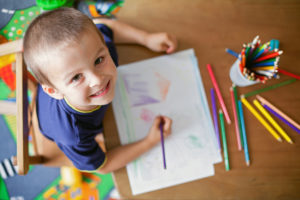 Research projects that teacher employment will grow 10% between 2016 and 2026 thanks to the increased demand for early childhood education. In other words, there are more options for schools and teachers than ever.
Research projects that teacher employment will grow 10% between 2016 and 2026 thanks to the increased demand for early childhood education. In other words, there are more options for schools and teachers than ever.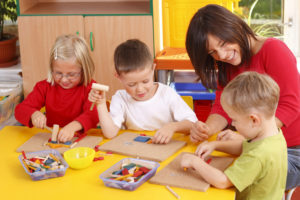 Approximately 75% of young children in the U.S. participate in local preschool programs but finding the right preschool for your family can be a challenge. Typically, an important part of this process is making visits to preschool classrooms on your list to see whether they meet your standards as a parent. Do you know exactly what to look for in a preschool, though? While each classroom will differ, this checklist can act as a great guide to help you recognize the outstanding facilities in your area.
Approximately 75% of young children in the U.S. participate in local preschool programs but finding the right preschool for your family can be a challenge. Typically, an important part of this process is making visits to preschool classrooms on your list to see whether they meet your standards as a parent. Do you know exactly what to look for in a preschool, though? While each classroom will differ, this checklist can act as a great guide to help you recognize the outstanding facilities in your area.